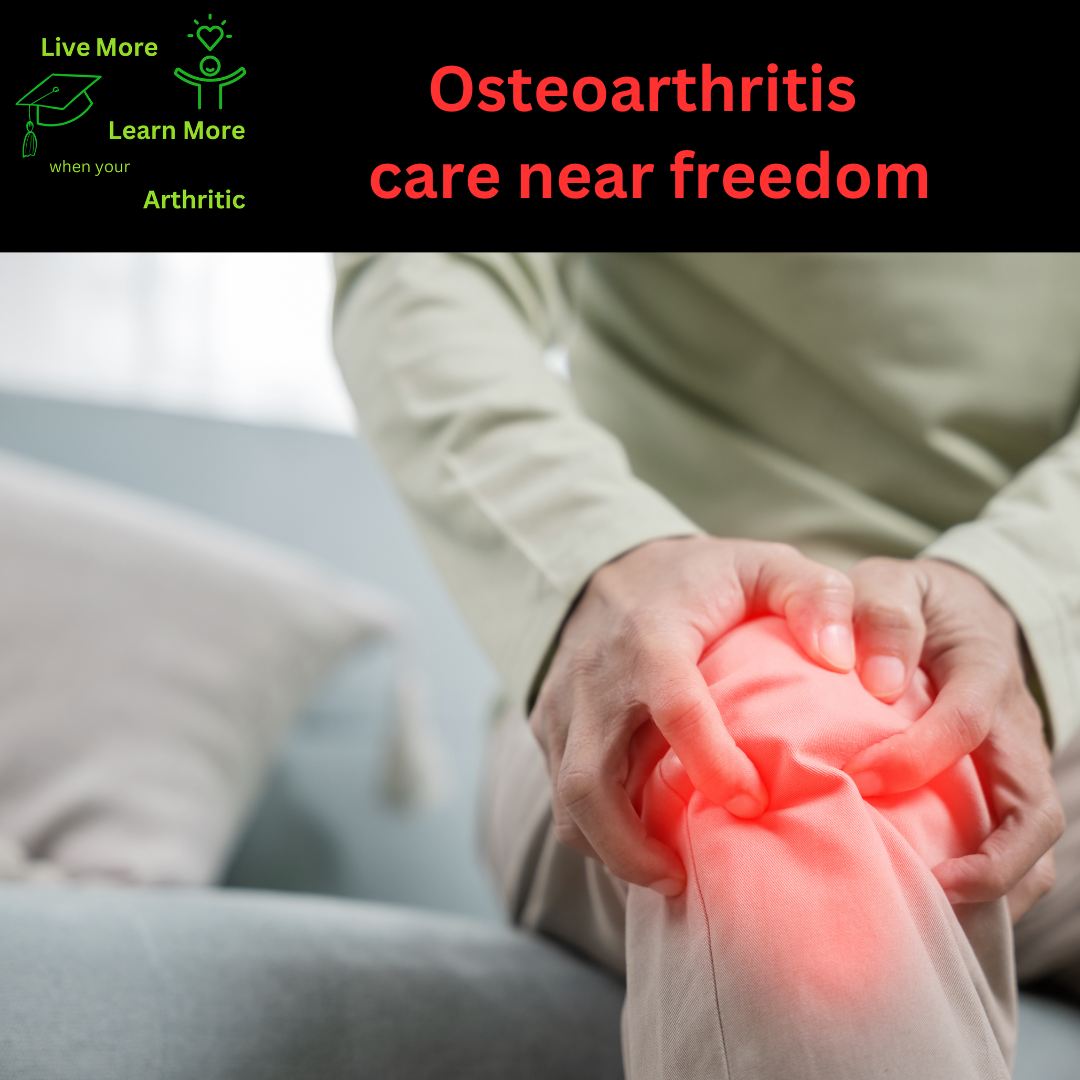
Osteoarthritis care near freedom
Navigating Osteoarthritis Care: Striking a Balance Near Freedom
Osteoarthritis care near freedom can be both a boon and a bane for sufferers, depending on various factors. On one hand, access to comprehensive care and treatment options can empower individuals to manage symptoms effectively and regain some degree of independence. Conversely, the complexities and costs associated with extensive care may present challenges and limitations, impacting quality of life.
 Causes, Triggers, and Symptoms of High Osteoarthritis Care Near Freedom
Causes, Triggers, and Symptoms of High Osteoarthritis Care Near Freedom
High levels of osteoarthritis care near freedom can be triggered by a combination of factors, including aging, genetic predisposition, joint injuries, and obesity. The constant pursuit of freedom from pain and disability may lead to over-reliance on invasive treatments or medications, potentially causing side effects or complications. Symptoms such as joint stiffness, pain, swelling, and reduced mobility can be exacerbated by intensive treatment approaches.
Enjoy read 6 more articles about Osteoarthritis:
- Erosive Inflammatory Osteoarthritis: Number 55 on the list of 100 types of Arthritis
- Osteoarthritis (OA) Self Examination Test
- Osteoarthritis: Number 1 on the list of 100 types of Arthritis
- The six primary symptoms of early signs of osteoarthritis (OA)
- The new dangers of Auto Immune in Osteoarthritis
- Secondary Osteoarthritis: Delving into Causes, Impacts, and Management
Exploring Types of Osteoarthritis Care Near Freedom
Osteoarthritis care near freedom encompasses a wide range of interventions, from conservative measures like physical therapy and lifestyle modifications to more invasive procedures such as joint replacement surgery. While these interventions can provide relief and improve function, they may also carry risks, such as infection, implant failure, or prolonged recovery times. Autoimmune-related issues are not typically associated with osteoarthritis, which primarily involves degenerative changes in joint cartilage.
Preventative Actions and Aging’s Role
Preventative actions for osteoarthritis care near freedom include maintaining a healthy weight, engaging in regular exercise to strengthen muscles and support joints, and avoiding repetitive stress or injury. Diet plays a crucial role, as certain nutrients like omega-3 fatty acids and antioxidants can help reduce inflammation and support joint health. Aging is a significant risk factor for osteoarthritis due to the natural wear and tear on joints over time.
Chronic Effects and Preventive Measures
Chronic effects triggered by intensive osteoarthritis care near freedom can include increased risk of infection, joint stiffness, nerve damage, and persistent pain. Preventive measures such as careful monitoring of treatment outcomes, adherence to rehabilitation programs, and regular follow-up with healthcare providers can help mitigate these risks and optimize long-term outcomes.
Achieving Higher Quality of Life with a Proactive Approach
A proactive approach to osteoarthritis care near freedom involves adopting lifestyle modifications and self-management strategies to minimize symptoms and preserve joint function. This may include weight management, joint protection techniques, adaptive devices, and ongoing education about the condition. By taking control of their health and well-being, individuals can experience improved mobility and overall quality of life.
Possible Complications of High Glucose
High glucose levels, often associated with diabetes, can complicate osteoarthritis care by impairing wound healing, increasing infection risk, and exacerbating inflammation in joints. Proper glucose management is essential for optimizing treatment outcomes and reducing the risk of complications.
 Interconnected Issues and Gender Disparities
Interconnected Issues and Gender Disparities
Osteoarthritis can affect individuals of all genders, but women are more commonly affected, especially after menopause due to hormonal changes. Common triggers include joint injuries, repetitive strain, obesity, and genetic factors. While osteoarthritis does not typically shorten life expectancy, it can significantly impact mobility and quality of life if left untreated or improperly managed.
In summary, osteoarthritis care near freedom requires a balanced approach that considers individual needs, preferences, and risks. By prioritizing preventive actions, adopting proactive management strategies, and leveraging the benefits of modern interventions, individuals can navigate the complexities of osteoarthritis care with resilience and optimism, striving for greater independence and well-being.

